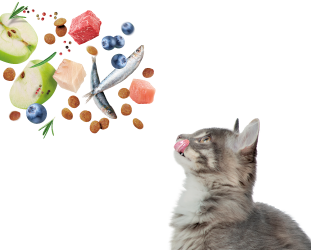Did you know that your dog can be celiac?
Gluten is a protein found in the seeds of cereals such as wheat, mainly, but also in others such as oats, barley or rye. Any food that contains these grains, even in trace form, can also be said to have gluten. Although most dogs tolerate all foods well, just like people, some may suffer from intolerance to this protein. Do you want to know what the symptoms, diagnosis and treatment of intolerant dogs are? Pay attention to your pet and its behavior to discover any signs of this disease.
What is a celiac dog?
A dog that is sensitive or intolerant to gluten will mean that, every time it consumes food that contains this protein, its stomach will not be able to digest it well, causing injuries to the intestinal villi. This can lead to chronic inflammation in the intestine or other serious problems, so if you notice your dog more tired than usual, reluctant to play or less active, do not hesitate to consult your veterinarian. He or she will perform blood and urine tests that will diagnose any possible abnormalities.
Celiac dogs usually have inherited this pathology from one of their closest relatives and it will manifest itself in their first years of life. As there is an important genetic component in suffering from this disease, there are certain breeds that are more prone to gluten intolerance than others, such as the Irish Setter and the Samoyed.
Most obvious symptoms
Knowing if your dog is gluten intolerant can be difficult to diagnose, but some common symptoms can give you clues as to what is happening to your four-legged companion.
- Diarrhea and vomiting. The main symptoms that a celiac dog will present will be digestive problems, because the intestinal villi have been affected and cannot perform their function normally. For this reason, your furry friend may suffer diarrhea or vomiting a few minutes after eating. If these clinical symptoms are persistent, they could cause malnutrition or dehydration.
- Symptoms on the skin. Your dog may suffer from hair loss, peeling, and dry skin. Itching in the ears or anus is especially common.
- Difficulty breathing. Ingesting gluten can also affect the respiratory tract, causing inflammation, itching or sneezing, due to irritation of the throat and nasal passages.
- Weight loss. The above symptoms can cause your dog to lose its normal body condition, lose weight or become malnourished.
Of course, an intolerance should not be confused with an allergy. The latter is a reaction of the body to something that the body does not tolerate. However, intolerance, such as gluten, is a disease that will damage the small intestine or other organs as that food is consumed.
My dog is gluten intolerant, what do I do?
If you think your dog suffers from gluten intolerance or a grain allergy, the first thing you should do is consult your veterinarian. Most likely, after the diagnosis, you should offer your four-legged companion a diet free of gluten or grains - although in some this protein is not present, such as rice, quinoa, corn or millet.
Not all dog food brands offer a special range to take care of their digestive system. Yes, this is the case of Dibaq Sense , Dibaq's exclusive range of grain- and gluten-free hypoallergenic foods, which prepares all its recipes with the aim of respecting the natural nutritional requirements of dogs and strengthening their immune system, avoiding allergies or digestive problems. . Try it and tell us how your little friend progresses!
Share this content















